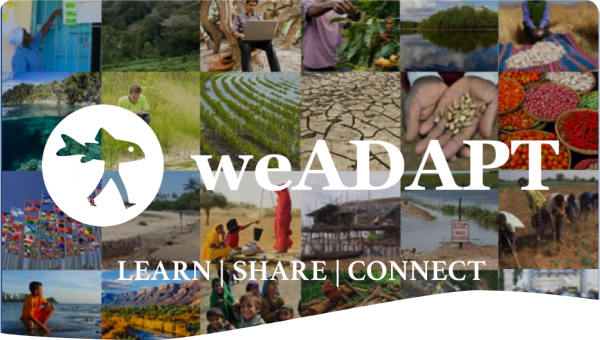 Tool -
Tool -
An assessment refers to the process of undertaking a critical, objective evaluation, and analysis of data and information, designed to meet a user's needs and to support decision making (UNEP, 2015). Water resources cannot be governed, nor developed or planned rationally without assessing the physical resource, the social systems which play a role in its usage, and the risks and vulnerabilities confronted. Assessments are usually guided by a particular instrument depending on the scenario and can be influenced by a variety of conceptual frameworks that form the basis for their design and implementation. For instance, some are defined by available methodological frameworks such as the DPSIR Framework, and others are driven by policy and legislative requirements, such as Environmental Impact Assessments (Tool C1.06).
Assessments are the basis for evaluating problems and identifying the best-suited solutions for enhancing water resources management. The results obtained from various assessments inform and influence the vision, strategic goals, objectives, and targets of water-related policies (Tools A1), legislation (Tools A2), and plans (Tools A3). Conducting assessments thus play several roles and functions in relation to policy, science, and decision making (UNEP, 2015):
- Provides a means through which science informs decision making
- Brings together diverse strands of knowledge in a synergistic way that is useful for decision making
- Influences the goals, interests, beliefs, strategies, resources, and actions of interested parties which can lead to institutional change and to changes in the discourse about the issue being assessed
- Establishes the importance of the issue being assessed
- Provides an authoritative analysis of policy-relevant scientific questions
- Demonstrates the costs and benefits of different policy options
- Identifies new research directions
- Provides options for technical solutions
- Provides the strengthening of the relationship between the science-policy interface.
Based on the function and objective they fulfill, assessments can be categorized into four main types (UNEP, 2008):
- Process assessments: summarises and synthesises scientific knowledge of global change processes rather than their impacts of the change per se (e.g., Intergovernmental Panel on Climate Change Working Groups I).
- Impact assessments: attempts to characterise, diagnose, and evaluate the risks or impacts of a proposed project, policy, or intervention on people, communities, economic sectors, ecosystems, and valued natural resources.
- Response assessments: identifies possible responses to a problem and evaluates their potential contribution in terms of cost and benefits.
- Integrated assessments: examines the linkages among the systems analysed in process, impact, and response assessments. UN Environment (2019) supplies an expansion of integrated assessments and outlines guidelines for conducting these kinds of assessments.
Conducting assessments should be strategic, goal-oriented, and done on an iterative basis. Figure 1 gives an overview of the stages to consider when attempting to conduct any type of assessment.
Figure 1. Stepwise Approach for Selecting and Operating Assessment Instruments. (Adapted from Maki, 2002; UNEP, 2015)
The potential influence an assessment has on the institutions, actors, and related discussions involved, depends particularly on three attributes (UNEP, 2008):
- Relevance: An assessment is deemed relevant if the user is aware of it and when it informs their policy, behavioural, and other decisions. Relevance is enhanced when the analysis and findings are inter-connected with the needs and provide reliable guidance to the policymakers in their decision-making process.
- Legitimacy: A measure of the political acceptability or perceived fairness of an assessment defines its legitimacy. We establish legitimacy when all interested stakeholders' input is accounted for, failure to do so, can result in some parties questioning the end-product or process of the entire assessment.
- Credibility: The scientific and technical soundness of an assessment is critical. Though an assessment can capture the attention of various minds, this is not the end. The assessment results are only seen as influential if audiences consider the knowledge to be valid. Credibility is usually a biproduct of use of quality data, use of established analytical methods and models, quality assurance, peer review, treatment of dissenting views, and the procedures used for selection of relevant experts.
Also, keep in mind that legitimacy and credibility, though both are concerned with the level of trust by public, there is an important distinction to be made. Credibility concerns itself with trust by the scientific experts based on their means of evaluation. Whilst legitimacy is central to the trust among all interested parties involved, who judge an assessment in the same way they, for instance, how they judge other aspects of governance, such as fairness, transparency, and balance in representation.
The Tools in this section introduce different types of assessment instruments that can be used to support designing and implementing IWRM interventions. These include:
- Risk Assessment (Tool C1.01): It is important to be able to identify specific hazards and to allow the determination of the appropriate ways to eliminate or control these identified water-related risks. Risk assessments are critical for ensuring proper, proactive, and timely decision making.
- Vulnerability Assessment (Tool C1.02): Water is extremely interconnected with the bio-physical environment and many social systems, and it is important to assess the vulnerability to potential threats like climate change. Assessing vulnerability aids in identifying key challenges within these systems which provide an opportunity to mitigate negative outcomes at the earliest possible stage.
- Stakeholder Analysis (Tool C1.03): Water is a ubiquitous resource which is shared by many stakeholders. Therefore, when trying to effectively govern the resource, the identification of its stakeholders is key to understanding their attributes, the kind of engagement that is needed, identifying strategic partners, and dynamics amongst different stakeholders.
- Social Assessment (Tool C1.04): Provides the opportunity to analyse conditions, causes, and consequences of social phenomena. This is crucial in understanding socio-cultural consequences and the effects of proposed projects, policies, and plans.
- Ecosystem Assessment (Tool C1.05): The natural environment is often home to our water resources, and it is critical to assess and appraise the current state of the environment, its ecosystem services, and the threats that they might encounter. This allows us to regain and attempt to maintain good water-related ecosystem health for sustainable development.
- Environmental Impact Assessment (Tool C1.06): As society attempts to maintain a balance between socio-economic development and environmental protection, Environmental Impact Assessments are important assessment instruments. EIAs promote the systematic evaluation of future environmental impacts from a specific project and aid in evidence-based decision-making.
- Strategic Environmental Assessment (Tool C1.07): Though Strategic Environmental Assessment may appear to be similar to Environmental Impact Assessments, it differs in the sense that it identifies and evaluates implications of a proposed policy, plan or programme on a much broader scale. It is especially beneficial in assisting governments in addressing implications at the earliest possible stage.
- Transboundary Diagnostic Analysis (Tool C1.08): Oftentimes water does not follow man-made administrative boundaries, hence it can be a transboundary resource. Transboundary Diagnostic Analysis allows us to collect and analyse information regarding the socio-economic and environmental impacts related to transboundary problems.
- Nexus Framework (Tool C1.09): Water, energy, agriculture, and natural ecosystems are known to exhibit strong interlinkages requiring a transition from the traditional sectoral operations toward a Nexus approach. Such an approach allows the identification of synergies, interlinkages, and trade-offs, which facilitates the identification of win-win solutions.
- Source-to-Sea Management (Tool C1.10): Natural ecosystems are extremely diverse, and though they can have different characteristics, often they are interconnected. The S2S approach is based on the basin scale, identifying the interconnections between the water and land resources as well as the delta, estuary, coast, nearshore, and ocean ecosystems and actors.


